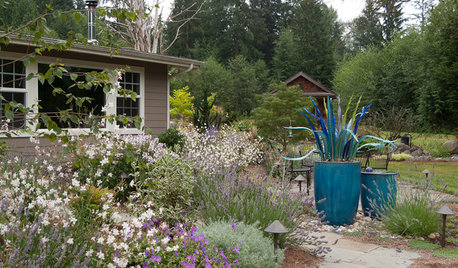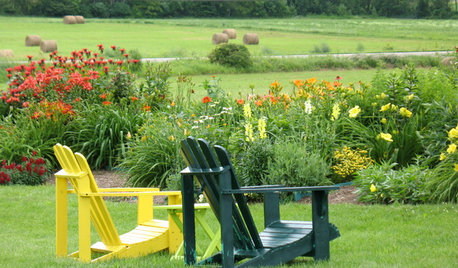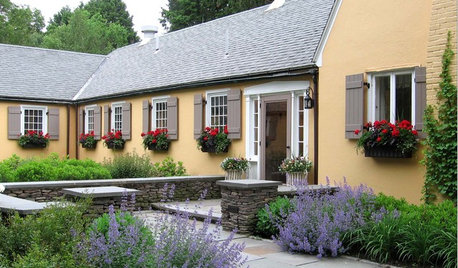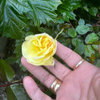why does deadheading induce growth
andreark
10 years ago
Related Stories

GARDENING GUIDES5 Easy Plants for a Romantic Entry Garden
Abundant flowers, a heady fragrance and striking foliage combine for a romantic front-yard garden that's deceptively low maintenance
Full Story
GARDENING GUIDES15 Ideas to Try in Your Garden This Year
These gardening stories were tops among Houzz readers. Which ideas might you try this year?
Full Story
GARDENING GUIDESTop 12 Summer-Blooming Perennials for Deer-Resistant Drama
Can you have garden color, fragrance and exciting foliage with hungry deer afoot? These beauties say yes
Full Story
NORTHEAST GARDENINGNortheast Gardener's July Checklist
Fire up your garden with sun-loving yellow and red blooms to put you in a party mood for outdoor summer fun
Full Story
GARDENING GUIDES10 Tips to Start a Garden — Can-Do Ideas for Beginners
Green up your landscape even if you're short on time, money and knowledge, with these manageable steps for first-time gardeners
Full Story
LANDSCAPE DESIGNLay of the Landscape: French Garden Style
Symmetry and geometry define this decorous landscape style, appropriate for both grand gardens and intimate spaces
Full Story
WINTER GARDENINGPruning Secrets for Exquisite Roses
Encourage gorgeous blooms year after year with this time-tested advice on how to prune your rosebush in winter for health and shape
Full Story
FALL GARDENING7 Reasons Not to Clean Up Your Fall Garden
Before you pluck and rake, consider wildlife, the health of your plants and your own right to relax
Full Story
CONTRACTOR TIPSBuilding Permits: What to Know About Green Building and Energy Codes
In Part 4 of our series examining the residential permit process, we review typical green building and energy code requirements
Full Story
LANDSCAPE DESIGNGet Along With Less Lawn — Ideas to Save Water and Effort
Ditch the mower and lower your water bill while creating a feast for the eyes with diverse plantings and gathering places
Full Story






roseseek
andrearkOriginal Author
Related Professionals
Beavercreek Landscape Architects & Landscape Designers · Brentwood Landscape Architects & Landscape Designers · Lakewood Landscape Architects & Landscape Designers · Maple Heights Landscape Architects & Landscape Designers · Waterbury Landscape Contractors · Choctaw Landscape Contractors · Fort Atkinson Landscape Contractors · Hicksville Landscape Contractors · Indio Landscape Contractors · Kettering Landscape Contractors · Miller Place Landscape Contractors · Rochester Landscape Contractors · Santa Maria Landscape Contractors · Vallejo Landscape Contractors · Yukon Landscape Contractorsjerijen
roseseek
donaldvancouver
andrearkOriginal Author
peachymomo
michaelg
andrearkOriginal Author
andrearkOriginal Author
caldonbeck
michaelg
andrearkOriginal Author
henryinct
andrearkOriginal Author
roseseek
henryinct
andrearkOriginal Author
andrearkOriginal Author
michaelg
andrearkOriginal Author
roseseek
henryinct
andrearkOriginal Author
roseseek